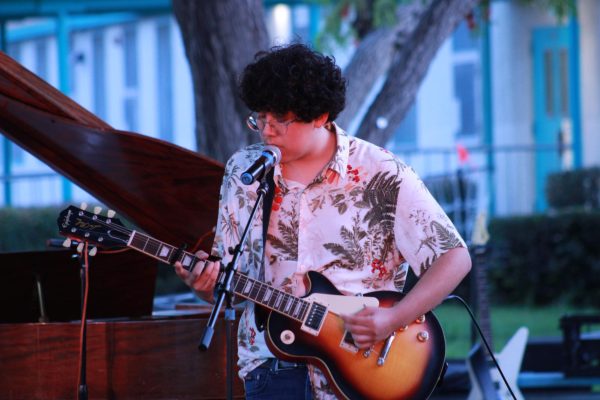Deferred Action for Childhood Arrivals is ending
September 20, 2017

Rallies, like this one held in Echo Park on Sept. 10, are being held aroud the country in response to President Trump’s announcement that he’s ending DACA, which affects an estimated 800,000 undocumented people, including students at Daniel Pearl Magnet.
Although sophomore Jason Echeverria is not directly affected by President Donald Trump’s recent decision to end the Deferred Action for Childhood Arrivals, he still aches to see friends who are affected by it.
“I’m not being affected by it but I know other people who are and it’s sad to see that their dreams are hurt,” Echeverria said.
On Sept. 5, Trump announced an end to DACA, a program that gives an estimated 800,000 undocumented youth a reprieve from deportation and gives them permits for work, according to the Department of Homeland Security website. In the Sept. 5 article “Trump ends DACA but gives Congress window to save it” published on CNN, Trump said that winding down the program would be more considerate than letting the courts end it.
He also said in the same article, “We will resolve the DACA issue with heart and compassion, but through the lawful Democratic process while at the same time ensuring that any immigration reform we adopt provides enduring benefits for the American citizens we were elected to serve. We must also have heart and compassion for unemployed, struggling and forgotten Americans.”
Trump gave Congress six months to come up with legislation to help the estimated 800,000 undocumented people affected by DACA.
According to the Sept. 5 article “Trump ends DACA program for immigrants” published in the Baltimore Sun, hundreds of people will continue to lose their ability to lawfully hold a job, buy a home and receive student loans if they no longer have DACA. Trump wants tougher immigration enforcement, in hopes of lowering the amount of immigrants let in.
In California, an estimated 200,000 undocumented people benefit from DACA. At Daniel Pearl Magnet High School, several students are affected by it.
“Well, I’ve always supported the implementation of DACA,” Counselor Martina Torres said. “It gives our undocumented students an opportunity to work and do things they couldn’t do before.”
The Los Angeles Unified School District has come out in support of DACA recipients.
“We call on the Trump administration to continue the support for these young immigrants, who have become valuable contributors to the community and the nation they consider their home,” Superintendent Michelle King said in the Aug. 30 press release titled “L.A. Unified Leaders Support DACAs, ‘Dreamers’.”
The debate on what to do with undocumented immigrants has and still is an ongoing battle. The first related proposition was made in Aug. 2001 by Senator Orrin Hatch and Senator Maria Cantwell. The two came up with the DREAM Act (Development, Relief, and Education for Alien Minors), an alternative act to legalize immigrants. Years passed and Congress didn’t do anything because they didn’t see this as an important enough topic to break the filibuster in Senate.
On June 15, 2012, President Obama introduced DACA, which kept people under the age of 31 from deportation and provided eligibility for a work permit according to the Sept. 6 article “Obama said DACA was ‘not a permanent fix’ in 2012 announcement” published in The Washington Post. DACA also provided a temporary employment authorization card that let undocumented students apply for a Social Security number, which allowed them to report wages and pay taxes. With a Social Security number, undocumented immigrants were able to have a driver’s license and an identification card.
In order to be eligible for DACA, undocumented immigrants must have lived in the U.S. continuously since June 15, 2007, had come to the United States before their 16th birthday, were present in the United States, attended school, have graduated from high school in the United States or have a GED. An honorably discharged veteran of the Coast Guard or Armed Forces of the United States could also apply for DACA.
The U.S. Citizenship and Immigration Services will no longer accept initial requests for DACA. They will only renew DACA requests received by Oct. 5 for those whose permit expires between Sept. 5 and March 5, 2018.
Trump’s decision to end DACA is affecting current high school seniors who are applying to colleges because now they are unsure on what lies in their future.
“It’s hard to know who is a DACA student because it’s not something that all students are open about,” Torres said. “I just want to say that I hope DACA students do continue to talk to adults that may help them.”


















